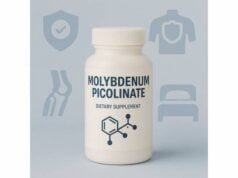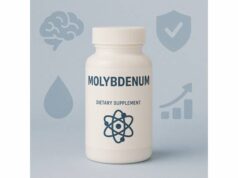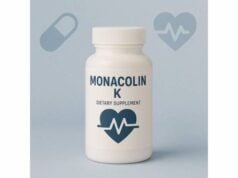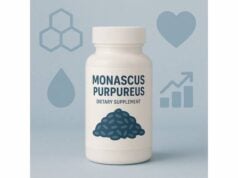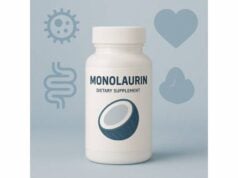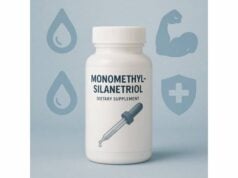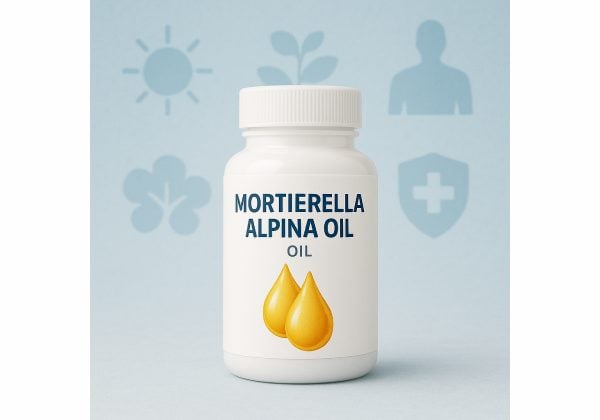
Mortierella alpina oil is a highly purified “single-cell oil” produced by fermenting the oleaginous fungus Mortierella alpina. Its standout feature is an exceptionally high content of arachidonic acid (ARA, 20:4 n-6), a long-chain omega-6 fatty acid that is naturally present in human breast milk and built into cell membranes throughout the brain, eyes, and immune tissues. Because of this, Mortierella alpina oil has been used worldwide for decades as a source of ARA in infant formulas alongside docosahexaenoic acid (DHA). The oil’s chemistry and safety are well characterized: it is refined to remove proteins and microbial residues, standardized for ARA content, and quality-controlled for oxidation and contaminants.
For adults, Mortierella alpina oil is less of a stand-alone supplement and more of a specialty ARA ingredient studied in short-term trials. Evidence to date suggests it reliably raises circulating ARA without consistently worsening inflammatory markers when used within studied ranges. This guide unpacks how the oil is made, which benefits are best supported, practical ways it is used, realistic dosage ranges, and who should avoid or be cautious—so you can decide whether and when it fits your needs.
Essential Insights
- Supports infant visual and neurodevelopment when provided with DHA; strongest data are in preterm infants.
- Typical studied adult intakes of ARA are ~240–1500 mg/day; infant formula provides ARA as a percentage of total fat with an ARA:DHA ratio near 1:1–2:1.
- Safety caveat: high-quality products are refined and tested, but oxidized oils and unsupervised high doses are not advised.
- Avoid or use medical supervision if you are a preterm infant’s caregiver without clinician guidance, have clotting disorders, or manage inflammatory conditions.
Table of Contents
- What is Mortierella alpina oil?
- What benefits are supported by research?
- How to use it day to day
- How much to take and when
- Side effects, risks, and interactions
- Who should avoid it or be cautious
- What the evidence says overall
What is Mortierella alpina oil?
Mortierella alpina oil is an edible triglyceride oil produced by controlled fermentation of the filamentous fungus Mortierella alpina. Under optimized, aerobic, light-limited conditions, the organism accumulates large amounts of long-chain polyunsaturated fatty acids in its cell membranes, chiefly arachidonic acid (ARA; 20:4 n-6). After fermentation, the biomass is separated, washed, and subjected to food-grade solvent extraction (commonly a hydrocarbon such as butane, which is subsequently removed), followed by a multistep refining process—degumming, neutralization, washing, bleaching, deodorization—and antioxidant stabilization. The final oil is filtered and standardized to meet strict specifications for ARA content, oxidation markers, residual solvents, heavy metals, absence of pathogens, and shelf stability.
Chemically, the oil is mostly triacylglycerols with ARA enriching the sn-2 and sn-1/3 positions to varying degrees. Typical fatty acid profiles for refined lots include about 45% ARA by total fatty acids, with the remainder comprising palmitic, stearic, oleic, linoleic, gamma-linolenic (GLA), and dihomo-gamma-linolenic acids, plus minor very-long-chain saturated fatty acids. Unsaponifiable matter (such as sterols) is low, generally around 1% by weight, and oxidation limits are tightly controlled (for example, low peroxide and p-anisidine values) to protect bioactivity and safety.
Why enrich foods with ARA at all? ARA is a structural fatty acid in phospholipids of the brain, retina, and immune cells. Fetuses accumulate ARA rapidly in late gestation, drawing on maternal supply; preterm birth interrupts this transfer. Human milk contains both ARA and DHA, and the physiological co-presence of these nutrients underpins the rationale to add ARA plus DHA to infant formula. Mortierella alpina oil provides a consistent, microbially derived ARA source at scale, independent of marine supplies and with predictable quality.
Beyond infant nutrition, this oil appears in clinical nutrition research and specialized supplements. In adults, controlled trials show it can raise circulating ARA levels and alter lipid mediator pools. However, consistent functional benefits in healthy adults are not yet established, and the intended, well-substantiated use remains as an ARA source together with DHA in early life nutrition.
Quality matters. Look for products that specify ARA percentage, batch oxidation values, and validated absence of contaminants. Properly refined Mortierella alpina oil is free of fungal proteins, which lowers allergenic risk relative to crude fermentation products. Storage in sealed, opaque containers at cool temperatures extends stability—twelve months at room temperature is common for unopened, antioxidant-stabilized lots when kept away from heat and light.
What benefits are supported by research?
The strongest evidence for Mortierella alpina oil comes from its role as a source of arachidonic acid in infant feeding, particularly when combined with DHA. Together, ARA and DHA reflect the balance present in human milk and fetal tissues. Several clinical lines converge here:
Neurodevelopment and cognition in infancy. Systematic evidence indicates that formulas or supplements providing both ARA and DHA can produce small but meaningful advantages on certain measures of infant cognitive development, especially when the ratio of DHA to ARA is balanced. Pooled analyses show the most consistent signals when DHA and ARA are provided in similar magnitudes (roughly a 0.5–1 DHA:ARA ratio). The underlying biology makes sense: ARA is built into neuronal membranes and supports synaptogenesis and signaling, while DHA contributes to membrane fluidity and photoreceptor function. The duo is physiologically co-delivered in human milk worldwide, although exact levels vary with maternal diet and region.
Retinal development and preterm infant outcomes. In extremely preterm infants, early enteral supplementation with ARA plus DHA has been associated with clinically important benefits. One randomized trial reported roughly halved rates of severe retinopathy of prematurity when infants received an enteral lipid providing 100 mg/kg/day ARA and 50 mg/kg/day DHA from shortly after birth to term-equivalent age. Observational analyses in similar populations also find that higher DHA appears protective against severe ROP primarily when circulating ARA is sufficiently high, reinforcing the concept that ARA supports the retinal milieu in which DHA can exert benefits.
Growth and oxylipin biology in preterm infants. Trials that titrate ARA and DHA intakes show dose-responsive increases in plasma ARA and in ARA- and EPA-derived oxylipins at higher ARA provision, without consistent adverse clinical signals. Some secondary analyses suggest benefits for somatic growth among very preterm infants when ARA and DHA are enhanced early, though findings are not uniform and often exploratory.
Adult endpoints: biochemical changes without consistent clinical effects. In healthy adults and older individuals, Mortierella alpina–derived ARA (or equivalent purified ARA) supplementation reliably raises plasma and cellular ARA within weeks. Across randomized trials up to about 1500–2000 mg/day, researchers generally have not observed consistent worsening of basal inflammatory markers, platelet aggregation, or standard cardiovascular risk factors. At the same time, reproducible clinical performance advantages are limited outside niche contexts (for example, transiently heightened post-exercise inflammatory signaling without impaired recovery in resistance-trained men). In short: the adult literature supports biochemical incorporation and short-term safety at studied doses but does not justify broad performance or health claims.
Who likely benefits most? The clearest beneficiaries are preterm infants under neonatal care and term infants receiving formulas formulated with ARA plus DHA, where the goal is to approximate physiological exposure. For adults, unless you are enrolled in a supervised clinical program or have a medically justified indication, routine ARA supplementation remains an area of investigation rather than standard practice.
How to use it day to day
For infant feeding (the primary, evidence-based use): Mortierella alpina oil is not something parents should add directly to a bottle at home. Instead, it is an ingredient in commercial infant formulas that already integrate ARA with DHA at predetermined levels, meeting regulatory specifications for safety, composition, and labeling. If you are selecting a formula, the most practical step is to read the nutrition panel for ARA and DHA per 100 kcal and—when available—their ratio. Formulas that provide both, often with ARA at similar or slightly higher levels than DHA, most closely mirror human milk. For preterm infants, any ARA or DHA supplementation strategy should be directed by a neonatologist; dosing schemes in trials are weight-based and time-limited, and they monitor fatty acid status and growth outcomes.
For adult supplementation (specialized contexts): If you have a clinician-guided reason to increase ARA, products may list “arachidonic acid” from Mortierella alpina or “fungal oil” standardized to an ARA percentage. Typical capsule strengths range from ~125–250 mg ARA per capsule. Research protocols commonly use 240–1500 mg ARA/day for 4–12 weeks. Many investigators co-monitor diet to maintain a balanced intake of omega-3s (EPA + DHA in the 250–500 mg/day range) so that bolus ARA does not occur against a background of very low omega-3 status. Because ARA is oxidation-sensitive, store supplements in a cool, dry place, keep lids tightly sealed, and avoid using them past the best-by date.
Culinary use: Mortierella alpina oil is not a culinary oil. It is not sold for frying or dressing and is designed for precise, low-dose fortification in controlled products where antioxidants and packaging protect it from heat and light.
Stacking and combinations: In infant nutrition, ARA and DHA are paired intentionally. For adults, if ARA is used, consider the entire fatty acid pattern—habitual linoleic acid intake, EPA/DHA intake, and overall dietary quality. Many researchers advise ensuring adequate omega-3 status before or alongside ARA to support balanced eicosanoid signaling. Avoid “megadosing” outside protocols.
Reading labels and quality cues: Look for the source name (Mortierella alpina oil), standardized ARA percentage, capsule ARA milligrams, antioxidant system (often mixed tocopherols), and third-party testing statements. Reputable infant formulas will show per-100 kcal values and comply with local regulations; reputable adult products will disclose actual ARA milligrams per serving, not only “oil milligrams.”
How much to take and when
Infants (via formula or clinician-directed supplement): Regulators and expert bodies specify ARA primarily as a proportion of total fat energy and in relation to DHA. Commercial formulas commonly target an ARA:DHA ratio close to 1:1 up to 2:1, reflecting human milk patterns. For term formulas, permitted use levels typically provide up to roughly three-quarters of a percent of total fat as ARA; for preterm formulas, ceilings are lower. When researchers estimate exposure at those formulation levels, daily ARA intakes for term infants often fall near 40 mg/kg body weight/day and about 25–30 mg/kg/day for preterm infants, assuming typical energy intakes and fat contributions. In randomized trials for extremely preterm infants, enteral supplements have used 100 mg/kg/day ARA with 50 mg/kg/day DHA (2:1 ARA:DHA) or, in other designs, 80–120 mg/kg/day ARA with 40–60 mg/kg/day DHA, administered from shortly after birth until term-equivalent age under neonatal supervision. None of these doses should be attempted at home; they require hospital oversight.
Children beyond infancy: Routine ARA supplementation beyond what is present in balanced diets or standard fortified foods is not recommended in healthy children. If a clinician identifies a reason to modulate long-chain polyunsaturated fatty acid intake, it is addressed within a comprehensive nutrition plan.
Adults: There is no established dietary requirement for preformed ARA in healthy adults beyond endogenous synthesis from linoleic acid; typical diets already provide about 100–250 mg/day from meats and eggs. Clinical trials that explore ARA as a supplement often dose between 240 and 1500 mg/day for 1–12 weeks. Within this range, studies consistently show increased tissue ARA without consistent adverse changes in basal inflammatory markers or coagulation assays. If an adult uses ARA for a research-driven purpose, timing with meals may improve tolerance, and pairing with adequate omega-3 intake (for example, 250–500 mg/day of EPA + DHA) maintains a balanced fatty acid milieu.
Pregnancy and lactation: Human milk intrinsically contains ARA; maternal diet influences levels modestly. However, supplemental ARA use in pregnancy and lactation should be overseen by a healthcare professional. Many prenatal recommendations focus on DHA; when DHA is emphasized, maintaining sufficient ARA through diet or balanced formulations matters for mother and infant physiology.
When to take it: For capsules, take with a main meal to improve absorption and minimize reflux. For infant feeding, follow product directions exactly; do not add separate oils unless instructed by a clinician.
Do not exceed sensible ranges: Exceeding studied adult intakes (>1500–2000 mg/day) lacks demonstrated benefit and could shift eicosanoid patterns in unknown ways. In infants, higher intakes are weight-based and tied to clinical goals; never improvise dosing.
Side effects, risks, and interactions
Common tolerability: Properly refined Mortierella alpina oil is generally well tolerated when used within studied ranges. The most common complaints with any concentrated lipid supplement are gastrointestinal: mild nausea, a feeling of fullness, reflux, or soft stools. Taking doses with food and splitting across the day can help. Oxidized oils may have an off-odor or taste; do not use if the product smells rancid or is past its best-by date.
Inflammation concerns: Because ARA is a precursor for some pro-inflammatory eicosanoids, a frequent worry is that ARA intake will inevitably raise inflammation. Controlled human trials up to about 1000–1500 mg/day do not show consistent increases in basal inflammatory markers (such as C-reactive protein) or worsened platelet function. That said, ARA can transiently amplify certain signaling responses to acute stressors (for example, exercise) without clear harm. The practical takeaway: within sensible ranges and with adequate omega-3 status, supplemental ARA has not consistently driven chronic inflammation in healthy adults. People with active inflammatory diseases should consult specialists before use.
Bleeding and clotting: Clinical data do not show increased bleeding risk within studied adult doses. Nonetheless, if you use anticoagulant or antiplatelet medicines, or have clotting disorders, discuss any lipid supplement (including ARA, fish oil, or others) with your clinician to avoid unintended interactions.
Allergy and intolerance: The source organism is fungal, but finished oils are refined and filtered to remove proteins, lowering allergenic potential. Some Mortierella alpina production processes historically used soy substrates; finished oils should be virtually free of soy protein, yet individuals with severe soy allergy should choose reputable products with clear allergen statements. Discontinue and seek medical advice if hives, wheeze, or swelling occur.
Drug and nutrient interactions: ARA competes enzymatically with EPA and DHA for cyclooxygenase and lipoxygenase pathways. This is why balanced omega-3 intake is emphasized. There are no well-documented adverse pharmacokinetic interactions with common medications at typical doses, but monitoring is prudent if you also take anti-inflammatory drugs, immune-modulating therapies, or lipid-lowering agents.
Special populations:
- Preterm and medically fragile infants: Only under neonatal direction. Doses are weight-based and monitored.
- Pregnancy and lactation: Do not self-supplement with concentrated ARA; follow clinician advice.
- Autoimmune or inflammatory conditions: Decisions should be individualized. Some patients may be advised to prioritize omega-3s first, then reassess fatty acid balance.
- Liver disorders and fat-malabsorption syndromes: Tolerability and absorption may be altered; seek medical guidance.
Quality and oxidation risk: ARA is highly unsaturated and prone to oxidation. Prefer products with documented low peroxide and p-anisidine values at manufacture and antioxidant protection. Store cool and sealed; do not decant into clear containers. Discard if the oil smells paint-like, fishy, or bitter.
Who should avoid it or be cautious
- Caregivers of preterm infants outside hospital settings. Do not attempt to replicate neonatal dosing at home. Weight-based ARA and DHA regimens are tools for specialists who monitor fatty acid status, growth, and organ outcomes.
- People with clotting disorders or on anticoagulants/antiplatelets. Although studied ARA doses have not shown consistent pro-thrombotic effects, any supplement that modifies lipid mediators should be reviewed by your prescriber.
- Individuals with uncontrolled inflammatory conditions. Your team may prioritize repleting omega-3 status and overall diet quality before considering ARA; in some cases, ARA supplementation may be inappropriate.
- Those with severe allergies to fermentation substrates. Finished oils should be protein-free, but if you have severe soy or other substrate allergies, use brands that publish allergen testing and contact manufacturers if uncertain.
- People unwilling to use products with transparent quality data. Choose suppliers that disclose ARA milligrams per serving, standardization, oxidation indices, and contaminant testing.
If you fall into any of these groups, or if you are pregnant, breastfeeding, or managing chronic disease, discuss Mortierella alpina oil with a qualified clinician before use. When in doubt, do not start without guidance.
What the evidence says overall
Mortierella alpina oil is a well-defined, industrially scalable source of arachidonic acid with strong regulatory and clinical underpinnings in infant nutrition. The case is most convincing when ARA is part of a physiologically balanced pair with DHA. In preterm infants, targeted early ARA plus DHA strategies under clinical supervision have improved specific outcomes such as the risk of severe retinopathy of prematurity and have raised circulating long-chain polyunsaturated fatty acids toward fetal-like levels. In term infants, the presence of both ARA and DHA in formula aligns with human milk composition and supports neurodevelopmental trajectories, with meta-analytic signals favoring balanced ratios.
For adults, Mortierella alpina oil consistently enriches blood and tissue ARA but has not yielded broad, reproducible clinical benefits across populations in short-term trials. Importantly, within studied ranges up to about 1000–1500 mg/day, it has not consistently worsened basal inflammation or clotting metrics. That profile supports its safety as a specialty nutrient under sensible use while highlighting that routine supplementation is unnecessary for most healthy adults consuming diverse diets.
Pragmatically, Mortierella alpina oil is best understood as a precision ingredient: indispensable in the toolkit for matching infant physiologic needs and valuable in research probing lipid mediator biology—yet not a general-purpose wellness oil. Use it where the evidence is strongest, keep the ARA:DHA balance in view, and insist on high-quality, transparent products.
References
- GRAS Notice (GRN) 1115 Agency Response Letter 2023 (Regulatory)
- 2008/968/EC: Commission Decision of 12 December 2008 authorising the placing on the market of arachidonic acid-rich oil from Mortierella alpina as a novel food ingredient under Regulation (EC) No 258/97 of the European Parliament and of the Council (notified under document number C(2008) 8080) 2008 (Regulatory)
- Effects of Different Proportions of DHA and ARA on Cognitive Development in Infants: A Meta-Analysis 2025 (Systematic Review)
- Randomized controlled trial of early arachidonic acid and docosahexaenoic acid enteral supplementation in very preterm infants 2022 (RCT)
- A systematic review of the effects of increasing arachidonic acid intake on PUFA status, metabolism and health-related outcomes in humans 2019 (Systematic Review)
Disclaimer
This article is for educational purposes only and does not replace personalized medical advice, diagnosis, or treatment. Do not start, stop, or change any nutrition or supplement plan for yourself or an infant without guidance from a qualified healthcare professional who knows your medical history. In infants—especially preterm infants—ARA and DHA dosing must be supervised by clinicians.
If you found this helpful, please consider sharing it with a friend or colleague on Facebook, X, or your preferred platform, and follow us for more evidence-based guides. Your support helps us continue creating high-quality resources.

